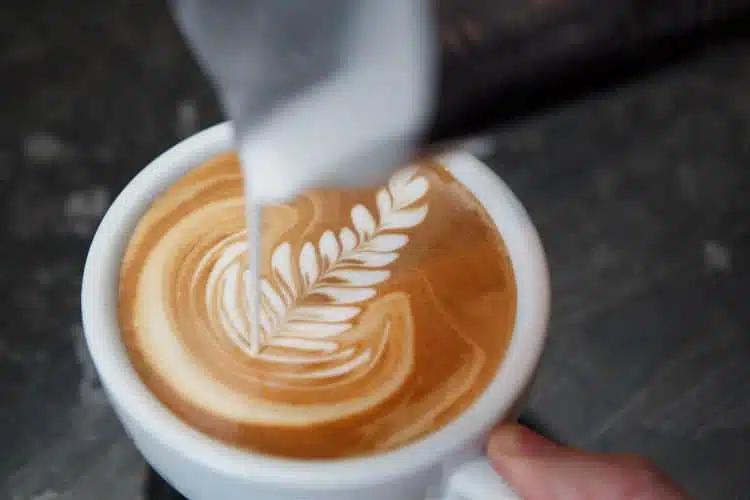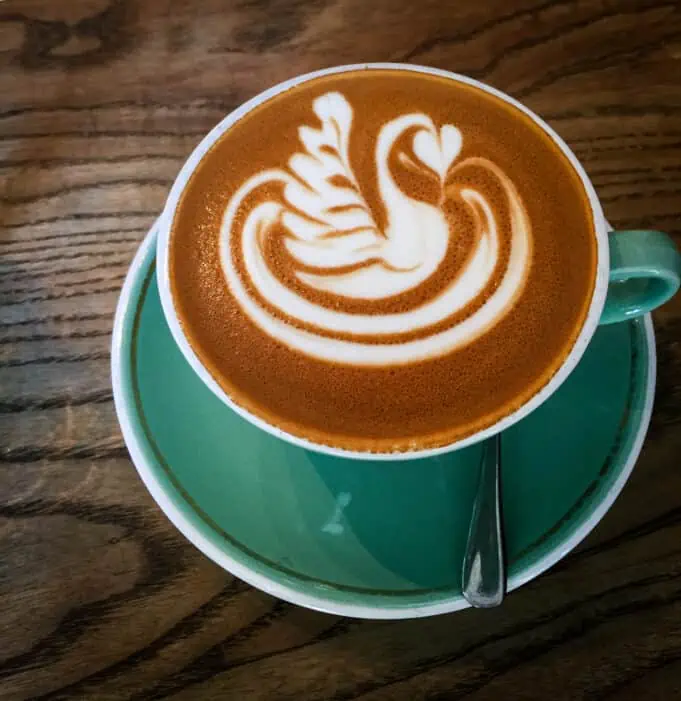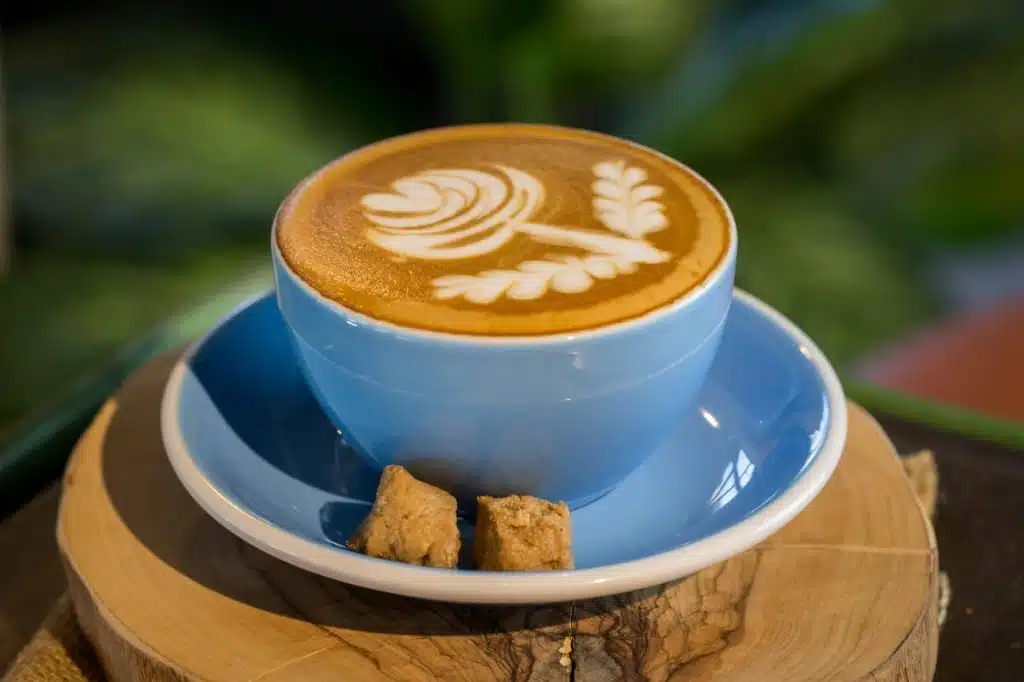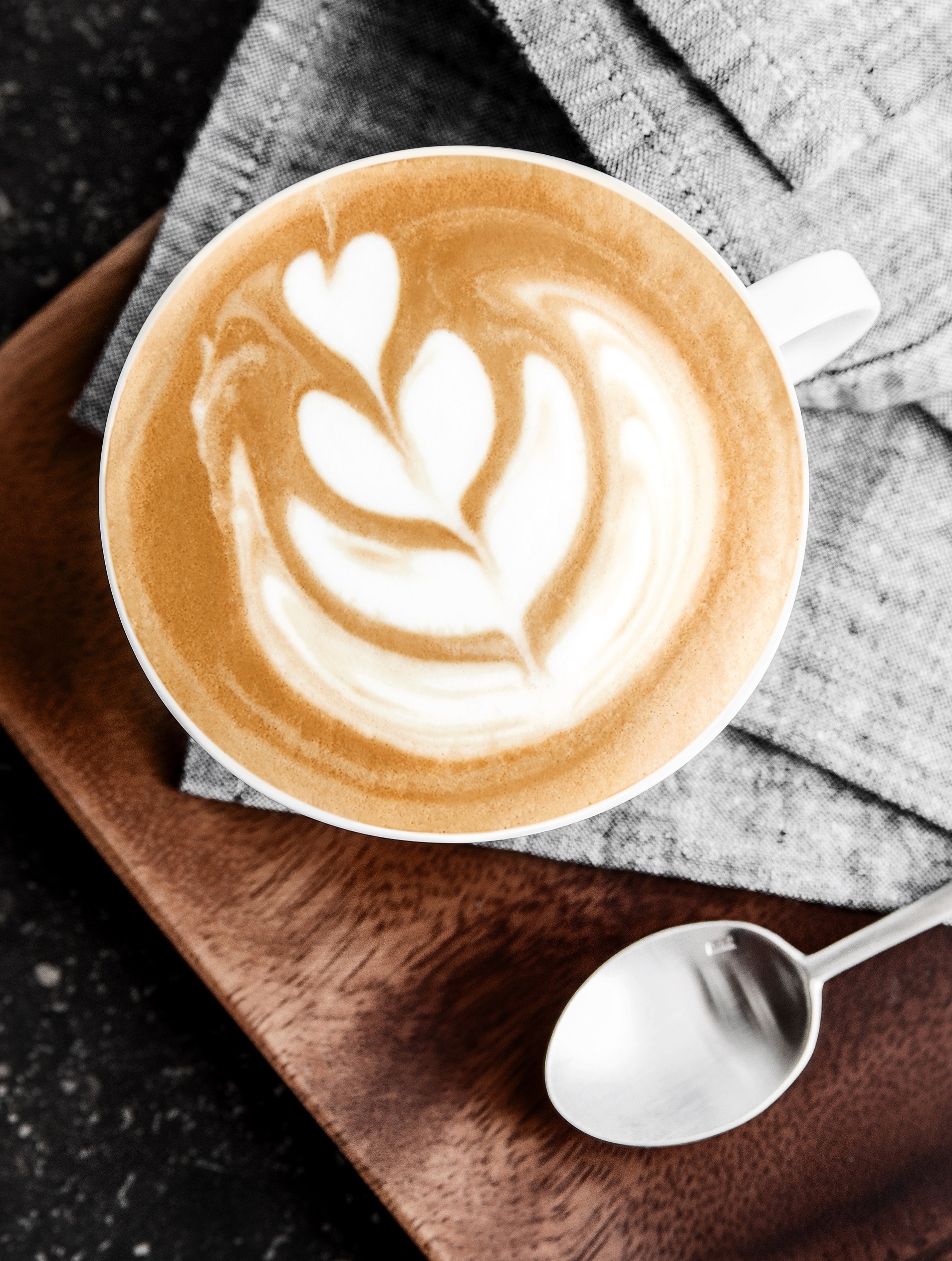In a bustling café in Italy, a barista expertly crafted a cup of caffè e latte, unknowingly setting the stage for a fascinating journey. The enthralling history of latte art began long before the intricate swirls and designs we admire today graced our coffees. As coffee migrated from its exotic origins and evolved through cultures, it began to inspire creativity. This delicate dance between espresso and milk not only tantalized taste buds but also became a canvas for artistic expression, leading to the captivating phenomenon we now celebrate as latte art.
The Origins of Coffee and Its Journey to Latte Art
Imagine a bustling marketplace in ancient Ethiopia, where farmers first stumbled upon the magical coffee bean. It was here that the story of coffee began, with legends whispering of goats dancing under the stimulating effects of this enchanting berry. This humble beginning sparked a global fascination that would eventually lead to the history of latte art.
As coffee spread across the Arabian Peninsula, it morphed into a cherished beverage. By the 15th century, the first cafes, or qahveh khaneh, emerged in Persia, creating spaces for social interaction fueled by rich, aromatic brews. Coffee’s journey took a magnificent turn when it reached Italy in the 17th century, igniting the country’s love affair with the drink.
Key Milestones:
- Ethiopian Origins: The discovery of coffee beans.
- Arabian Peninsula: Emergence of coffee as a cultural staple.
- Italian Influence: Introduction of espresso and milk-based drinks.
The marriage of espresso and steamed milk formed the foundation of the beloved latte. However, it wasn’t until the late 20th century that the art of crafting delicate patterns on the surface began to flourish. As baristas experimented with this technique, the history of latte art transformed from simple froth into intricate masterpieces, showcasing creativity and precision.
By tracing coffee’s adventurous roots, we can appreciate how it blossomed into the breathtaking art form we enjoy today.

The Birth of the Latte: How It All Began
In the quiet corners of Italy during the early 20th century, a new sensation began to brew. The history of latte art traces its roots back to the humble beginnings of the beloved “caffè e latte.” This creamy delight, a combination of espresso and steamed milk, sparked a culinary revolution.
As the post-war era dawned, the Italian coffee culture flourished, igniting the passion for creating coffee that’s not just a beverage, but an experience. Here’s how the latte began its enchanting journey:
- 1930s: Espresso machines started gaining popularity, allowing for rich, bold coffee flavors.
- 1950s: The introduction of milk frothers made it easier to create the silky foam that topped the latte.
- 1960s: The caffè e latte became a staple in Italian cafés, enticing locals and tourists alike with its creamy texture and inviting aroma.
The balanced marriage of espresso and milk showcased a tactile experience, transitioning coffee from simple nourishment to an artful indulgence. Over time, baristas began experimenting with foam textures and pouring methods, setting the stage for the intricate designs we now admire.
This pursuit of perfection in every cup laid the foundation for what would evolve into the beloved history of latte art, creating a world where each pour became a canvas, and every latte told a story.
Caffè e Latte: The Italian Connection
Nestled in the heart of Italy, the story of the beloved caffè e latte serves as a pivotal chapter in the history of latte art. This delightful beverage merges the bold essence of espresso with the creamy texture of steamed milk, creating a harmonious blend cherished by many.
In Italian cafes, the ritual of enjoying a morning caffè e latte transcends mere consumption; it’s a cultural experience. Picture this: locals gather, sipping their lattes while exchanging stories and laughter. This social aspect truly elevates the drink, making it not just a beverage, but a daily pleasure.
Key Characteristics of Caffè e Latte:
- Ingredients: A classic caffè e latte consists of espresso and steamed milk, typically served in a large cup.
- Preparation: Unlike a cappuccino, which emphasizes froth, caffè e latte focuses on the harmonious mix of coffee and milk without a significant layer of foam.
- Serving Style: Traditionally consumed in the morning, it pairs perfectly with Italian pastries, embodying the essence of an Italian breakfast.
As caffè e latte spread beyond Italy, its essence evolved, giving rise to the artistry we now associate with modern latte art. Through the simple yet profound connection of coffee and milk, the history of latte art finds its roots, reminding us of the rich traditions and vibrant culture that shaped it. This connection continues to inspire baristas worldwide, each adding their own flair to this Italian classic.
Latte Art Emergence: A 20th Century Phenomenon
As the clock struck the latter half of the 20th century, a delightful revolution brewed within the world of coffee. The history of latte art began to unfold against the backdrop of espresso machines evolving into an essential cornerstone of coffee culture. Imagine bustling coffeehouses in Italy and the United States, each aspiring barista skillfully crafting drinks that tasted as good as they looked.
In the 1980s, a wave of innovation washed over the coffee scene. Designers and coffee aficionados yearned for a personal touch, transforming ordinary beverages into artistic expressions. Enter the concept of latte art, where steamed milk and espresso danced together to create enchanting patterns.
Key milestones of this period include:
- The Early Techniques: While simple designs such as hearts and rosettas emerged, the technique required finesse and an understanding of milk texture.
- Tool Advancements: The introduction of machines that allowed precise control over espresso extraction and milk frothing spurred creativity among baristas.
- Cafés as Art Arenas: Coffee shops became galleries where every cup served was a canvas, challenging the notion of what coffee could embody.
Thus, the history of latte art blossomed during this vibrant era, elevating coffee from mere sustenance to an intricate art form, capturing imaginations and taste buds with every steaming cup. This transformation not only reflected the ethos of the time but sowed the seeds for an expansive cultural phenomenon that still thrives today.

The Techniques Behind the Masterpieces
As we dive into the history of latte art, we can’t overlook the meticulous techniques that transform an ordinary cup of coffee into a canvas of creativity. Baristas have perfected methods that not only enhance the visual appeal of coffee but also elevate the overall experience. Here’s a glimpse into some techniques that have shaped this art form:
- Free Pouring: This technique involves skillfully pouring steamed milk into a shot of espresso to create a design spontaneously. Think of it as a dance where the barista flows effortlessly to form hearts, rosettas, and tulips.
- Etching: For those who crave precision, etching provides a way to draw intricate designs using a tool, often resembling fine art. Baristas delicately use a toothpick or specialized tool to carve out patterns ranging from swirls to elaborate figures.
- Layering: Some baristas create stunning multi-layered effects, employing different milk textures and colors — think of espresso and frothed milk working together in harmony, resulting in dazzling visuals.
- Coloring: Though traditional latte art is typically monochromatic, innovative baristas have begun using colored syrups or edible pigments to push boundaries and create vibrant masterpieces.
Each technique in the history of latte art tells a story of passion, creativity, and the pursuit of excellence. For every sip taken, there’s a world of skill and artistry behind that frothy masterpiece, inviting coffee lovers to appreciate the beauty in simplicity.
From Basic Hearts to Intricate Designs
Picture a small café bustling with energy as baristas gracefully glide behind the counter, foaming and frothing milk with precision. The aroma of freshly brewed coffee mingles with the joyous chatter, creating an atmosphere of warmth and creativity. This scene exemplifies the evolution of the history of latte art, where basic hearts have transformed into intricate designs that captivate coffee lovers worldwide.
Initially, creating latte art revolved around simple patterns. Baristas mastered heart shapes, serving as the foundation for budding artists. As the passion for this craft grew, so did the complexity of designs. Here’s a glimpse into this enchanting journey:
- Basic Hearts: The quintessential starting point. With a steady hand, a barista pours milk, forming a delicate heart atop the espresso.
- Roses: Baristas began to experiment, shaping foam into elegant roses that symbolize love and artistry, showcasing the skill learned from those hearts.
- Tulips: A step further, tulip designs melded various techniques, marking a significant advancement in the history of latte art.
- Swans and Other Creatures: Artisans then pushed boundaries, weaving together intricate swans and animals that danced upon the surface, leaving coffee enthusiasts awestruck.
The art of espresso and microfoam reached new heights, elevating coffee from a mere drink to a canvas of creativity, forever changing the history of latte art.
The Role of Baristas in Latte Art Evolution
As we sip our morning brew, it’s easy to overlook the artistry that graces our cups. Yet, the history of latte art reveals a captivating tale of baristas, whose dedication to their craft transformed simple coffee into stunning visual masterpieces.
Baristas have long been the artisans of the coffee world, perfecting their skills over decades. Initially, they focused primarily on the brewing process, but as the demand for visually appealing coffee grew, a new passion ignited—the art of milk foam.
Here’s how baristas influenced the evolution of latte art:
- Skill Development: Baristas honed their skills, experimenting with different milk frothing techniques to create the perfect canvas for latte art.
- Crafting Techniques: They learned how to pour with precision, utilizing various angles and velocities, bringing life to a simple cup of latte.
- Creativity Unleashed: With every pour, baristas pushed boundaries, crafting intricate designs beyond the classic hearts and rosettas, introducing whimsical patterns, animals, and even portraits into the coffee culture.
Moreover, baristas became ambassadors of the history of latte art, sharing their knowledge through workshops and social platforms. Their role transcended mere coffee preparation; they cultivated a vibrant community centered on craftsmanship, imagination, and, ultimately, the shared joy of coffee.
Thus, the barista’s touch continues to shape the landscape of latte art, making each cup not only a beverage but a canvas of creative expression.

Cultural Impact: Latte Art Across the Globe
The history of latte art transcends mere aesthetics; it’s a vibrant tapestry woven into cultures worldwide. As coffee lovers have embraced this artistic expression, latte art has morphed from quaint café embellishment into a global phenomenon. Consider these impactful aspects:
- Cultural Fusion: In countries like Japan, latte art embraces traditional motifs, such as cherry blossoms, creating a harmonious blend of coffee culture and local artistry.
- Social Ritual: In Ethiopia, where coffee ceremonies are steep traditions, the introduction of latte art has reshaped gatherings, making them more visually appealing and interactive.
The cultural impact of latte art extends to how individuals experience and share moments. Observing a beautiful heart or intricate rosette atop their latte, customers can’t resist capturing and sharing it on social media platforms, igniting a new wave of appreciation.
| Country | Popular Designs | Cultural Significance |
|---|---|---|
| Italy | Classic Hearts | A staple at every café |
| Japan | Nature-inspired motifs | Reflection of seasonal beauty |
| Australia | Unique Textures | Emphasis on quality and craftsmanship |
| U.S. | Innovative Patterns | A canvas for creativity and experimentation |
Furthermore, latte art competitions have rejuvenated interest, bringing baristas together in a shared goal: to push boundaries, innovate, and celebrate skills. Thus, the history of latte art highlights not just an aesthetic pursuit, but a communal and cultural evolution that continues to brew across the globe.
The Rise of Social Media and Its Influence on Latte Art
In a world increasingly shaped by social media, the history of latte art has experienced a spectacular transformation. Once limited to the cozy corners of coffee shops, latte art now dances across screens globally, captivating coffee enthusiasts and professionals alike.
With the advent of platforms like Instagram and TikTok, intricate foam designs have garnered attention far beyond café walls. Images of beautifully crafted hearts, rosettas, and even whimsical animals spread like wildfire, igniting creativity. Here’s how social media reshaped this art form:
- Visual Appeal: High-resolution images highlight the aesthetics of latte art, turning each cup into a canvas that begs for admiration.
- Community Building: Platforms connect baristas and coffee lovers, fostering collaboration and potentially sparking new techniques that influence the history of latte art.
- Education and Inspiration: Tutorials and live streams allow aspiring coffee artists to learn from seasoned professionals, amplifying skills and encouraging innovation.
Social media acts as a double-edged sword; while it celebrates the artistry of coffee, it also establishes standards that push baristas to elevate their craft. As users share their latte art creations, they create a vibrant tapestry of inspiration, ensuring the history of latte art is dynamic and ever-evolving. Thus, we witness a global renaissance in this charming art form, driven by the power of connection through social media.
Latte Art Competitions: A Showcase of Skill
As the history of latte art unfolds, one cannot overlook the dazzling arena of latte art competitions, where baristas step into the spotlight to showcase their creative flair. Imagine a bustling café transformed into a high-stakes battleground, with skilled artisans wielding steaming pitchers and espresso machines like modern-day knights.
Competitions offer a thrilling platform for baristas to:
- Demonstrate their skills: Contestants bring their best techniques, from pouring basic shapes to creating intricate designs—each cup a canvas that tells its own story.
- Innovate: As the competition heats up, baristas push the boundaries of creativity, experimenting with new styles and flavors that add depth to the history of latte art.
- Network: Competitors meet fellow artists, exchanging ideas and techniques, thus fostering a community passionate about the craft.
While latte art competitions vary in format, most feature categories such as free pour designs, where competitors create shapes without additional tools, and latte art over latte where artists enhance their creations with edible materials.
In recent years, events like the World Latte Art Championship have gained international recognition, drawing participants from around the globe. These showcases not only elevate the status of latte art but also celebrate the unique stories behind each foam creation. As these competitions evolve, they etch new chapters into the ever-evolving history of latte art.

The Future of Latte Art: Trends and Innovations
As we sip our morning brews, the history of latte art continues to evolve, captivating our senses with both flavor and creativity. A new wave of trends and innovations is currently sweeping across coffee shops around the globe, pushing the boundaries of what latte art can be.
- Sustainable Practices: The push for eco-friendly coffee sourcing is reshaping how baristas create latte art. They are now focusing on using organic, ethically sourced beans that not only brew delicious espresso but also support the environment.
- Tech-Infused Creations: Technology is revolutionizing the latte art scene. From smart espresso machines that precisely control temperature and pressure to apps that teach intricate designs, baristas are harnessing tech for innovation.
- Alternative Milks: With growing demand for plant-based options, alternative milks are making their mark. Oat milk, almond milk, and other alternatives provide different textures that allow for distinct styles of latte art, challenging traditional techniques.
- Global Influences: As coffee culture intertwines with traditions from different regions, we see unique designs inspired by international artistry. For instance, Japanese matcha art is finding its way into traditional latte-making.
In summary, the history of latte art doesn’t end with past achievements. Instead, it’s a vibrant tapestry that weaves together sustainability, innovation, and cultural influences. As we look ahead, the future glimmers with exciting possibilities for this beloved craft.
Frequently Asked Questions
What is latte art and how did it originate?
Latte art is a captivating method of preparing coffee drinks, where the barista meticulously pours steamed milk into a shot of espresso to create intricate patterns or images on the surface. Its origins trace back to the 1980s in Italy, where the technique evolved from the traditional cappuccino. However, it gained prominence worldwide through skilled baristas in the specialty coffee movement, turning the simple act of pouring milk into a canvas for artistry.
What techniques are commonly used in latte art?
Baristas employ various techniques to create latte art, with the two most popular being the ‘free pour’ method and the ‘etching’ technique. In free pouring, the barista skillfully angles the milk jug to form elegant shapes like hearts or rosettas in a seamless flourish. Conversely, the etching technique involves using tools to draw precise designs, such as flowers or more complex visuals, on the surface of the foam. Each method requires practice and a deep understanding of milk texture and dynamics.
What types of milk are best for creating latte art?
When it comes to crafting stunning latte art, the choice of milk is paramount. Whole milk is often favored due to its ideal balance of fat and protein, which allows for a silky microfoam that melds beautifully with espresso. Alternatively, non-dairy alternatives such as oat milk and almond milk can also produce noteworthy results, although the texture may vary. Ultimately, experimenting with different milk types can lead to a unique signature style of latte art.
Is it easy to learn how to make latte art?
While the concept of latte art may seem straightforward, mastering it can be quite an artistic endeavor. Beginners often find it challenging to produce the sought-after microfoam and create recognizable designs simultaneously. However, with dedication, practice, and patience, anyone can hone their skills. Many baristas suggest starting with basic shapes, gradually progressing to more intricate patterns as confidence and technique develop.
Can I make latte art at home without professional equipment?
Absolutely! Creating latte art at home doesn’t require professional barista equipment. Many home coffee enthusiasts use standard espresso machines or even stovetop espresso makers. The key lies in frothing milk to the right consistency, which can be achieved with a handheld milk frother or even a French press, provided you put in the effort. With a little creativity and practice, you can impress guests with delightful homemade latte art.

